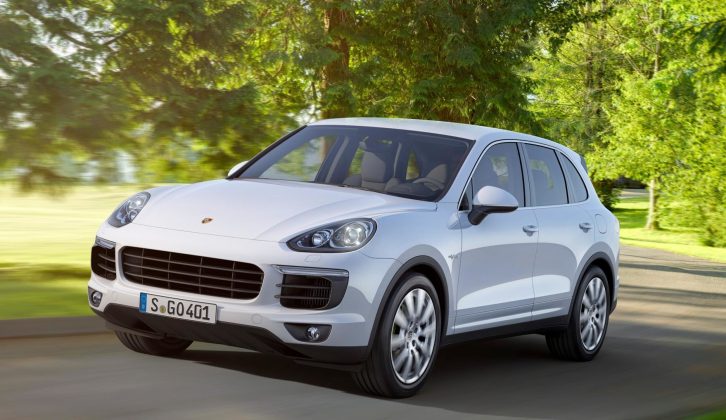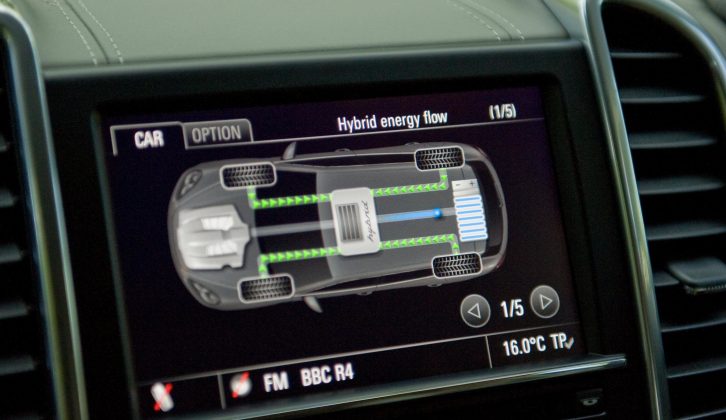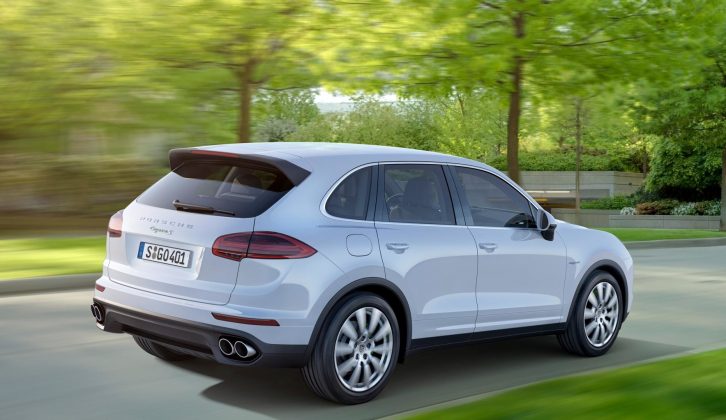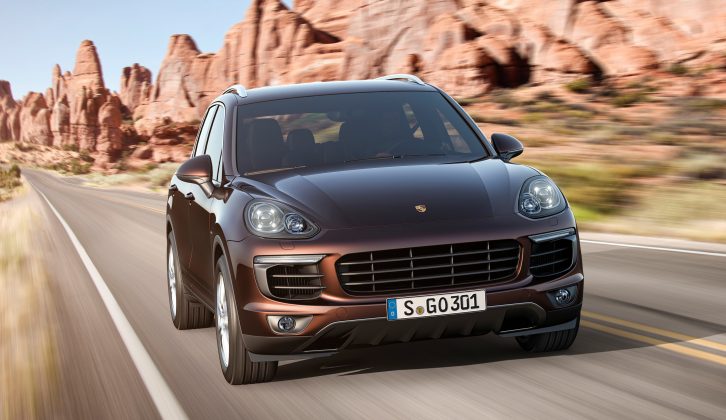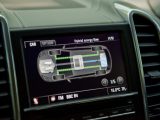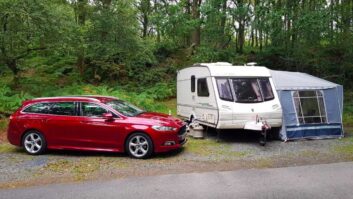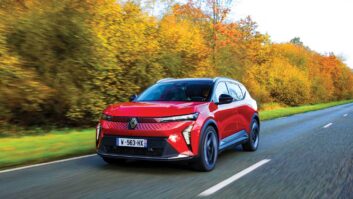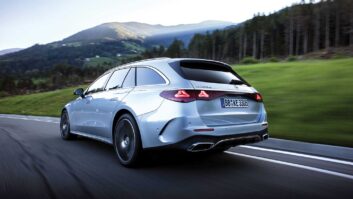I’m trying to think of the last time I saw a Porsche on a campsite or towing a caravan. It was a while ago, that’s for certain. Despite being unusual in caravanning circles, Porsche’s big 4×4, the Cayenne, ought to make a decent tow car. Even the petrol-electric Cayenne S E-Hybrid I’ve been driving has a 3500kg towing limit.
This plug-in hybrid has a claimed range of 22 miles in pure electric mode. The ability to run on electric power alone means the Porsche is able to return incredible economy and emissions figures in official tests, with a combined figure of 83.1mpg and carbon dioxide emissions of just 79g/km.
In reality you’ll only get close to those figures if you have a relatively short commute and regularly top up the battery. You can charge up in a little under three hours with the standard 3.6kW charger from a purpose-built charging point, or just under one-and-a-half hours with the optional 7.2kW charger. If no power supply is handy, pressing the ‘E-Charge’ button uses the engine as a generator. It seems like robbing Peter to pay Paul to me, but does mean you could charge the battery while outside of town then run on electric power in urban areas.
The Porsche Cayenne defaults to running on electric power, only waking up the V6 petrol engine if the accelerator is given a weighty prod or if the battery runs low. Running on electricity alone makes the Cayenne very quiet and relaxing at low speeds.
It seems odd to say this of a Porsche, but pootling around town is what the E-Hybrid is really good at. The eight-speed automatic gearbox changes gear smoothly, and if you have a short commute the whole journey should be possible without troubling that sleeping V6. Company car drivers will benefit from low Benefit-In-Kind tax bills because of the low emissions, and if that commute takes you into central London, the E-Hybrid is exempt, saving £11.50 a day.
On longer journeys, the Cayenne is less convincing. Once the battery runs low the car relies more and more on the V6 petrol, which means fuel economy plummets. After a long drive on a variety of roads the trip computer showed an average of 28mpg. I’ve driven plenty of big diesel 4x4s that can match or beat that.
There’s also a considerable amount of road noise on the motorway. Blame the massive 21-inch alloys and their fat, sticky tyres. The ride quality is acceptable rather than plush, even with the optional air suspension (£1328) in comfort mode. A Range Rover Sport does a better job of smoothing over lumps and bumps in the road while keeping everything well tied down.
Switch the suspension and gearbox to their ‘sport’ settings and there’s fun to be had, but the Cayenne is more at home on flowing A-roads rather than tight and narrow B-roads. It’s just so big.
The Porsche is heavy, too, with a kerbweight of some 2350kg. The extra weight of hybrid drivetrain makes it around 200kg heavier than a diesel Cayenne, and gives an 85% match figure of 1998kg.
Unfortunately our Porsche test car wasn’t fitted with a tow ball, so a true test of what tow car ability it has was simply not possible. But the performance of the car in solo driving leaves no doubt that it could easily pull a big, twin-axle caravan.
If the electric motor and petrol engine are both on song at the same time, there’s a massive 435lb ft torque. That’s enough for emphatic overtaking. What’s more, since the Porsche recaptures energy when coasting or braking to charge the battery, it shouldn’t run out of electricity completely. So even when the car isn’t capable of running on electric power alone there should be an extra kick of performance ready when you need it.
You can see whether the electrics are charging or delivering power through the touchscreen display in the centre of the dashboard. The dash, like the rest of the cabin, is well finished, although the profusion of buttons alongside the gearlever takes a little getting used to.
There’s plenty of head and legroom whether you are travelling in the front or the back. There’s less boot space than in a non-hybrid Cayenne, but the 580-litre capacity means the E-Hybrid is still practical enough for a week or two away in the caravan.
Even so, if I was in the market for a Cayenne to pull my tourer, it would be one of the diesels rather than the hybrid which I’d be tempted by. The diesel line-up starts from just over £50,000, rather than £61,474 for the E-Hybrid. And unlike the petrol-electric car, the diesel’s economy doesn’t worsen dramatically 20 miles from your front door.
There's less boot space than in a non-hybrid Cayenne, but it still has a 580-litre capacity
